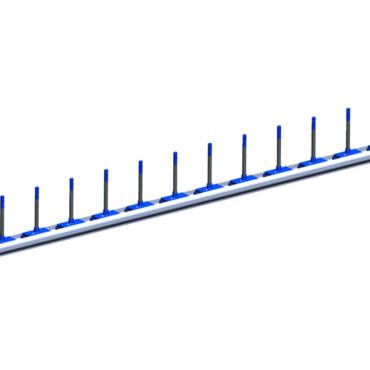Replacing your HVAC system is a significant decision and timing it right can make all the difference. Choosing to replace your system in the “shoulder season”—the transitional months between peak cooling and heating demands, like spring and fall—can provide multiple benefits, from cost savings to improved convenience. Here’s why the shoulder season is the best time to replace your HVAC system and how it can set your home up for year-round comfort.
1. Increased Availability and Flexible Scheduling
During peak seasons—summer for air conditioning and winter for heating—HVAC companies are often flooded with repair calls, emergency service requests, and routine maintenance appointments. The shoulder season, however, is less busy, meaning technicians have more availability and can offer flexible scheduling options for installation.
This increased availability allows you to choose a time that’s most convenient for you rather than waiting for the next available slot. Additionally, technicians have more time to dedicate to your project, ensuring a thorough, unrushed installation. Choosing the shoulder season for your replacement reduces the likelihood of delays and allows for a more relaxed, personalized service experience.
2. Cost Savings on Equipment and Installation
Many HVAC manufacturers and service providers offer discounts, promotions, or rebates during the shoulder season to incentivize replacements. For homeowners, these offers can make a significant difference in the overall cost of a new system, reducing the upfront investment required for a high-efficiency unit.
Austin homeowners can also check with local utility companies, such as Austin Energy, to see if they offer rebates or incentives for energy-efficient HVAC installations during the off-peak months. Taking advantage of these discounts makes it easier to upgrade to a modern, efficient system, saving on both installation costs and long-term energy bills.
3. Ideal Weather Conditions for Installation
Replacing an HVAC system often involves temporarily turning off the heating or cooling in your home. By choosing the shoulder season, you can avoid extreme temperatures, making the installation process more comfortable for both you and the technicians. In Austin’s hot summers, an AC replacement can be challenging to schedule due to the immediate need for cooling. Similarly, in colder months, a heating replacement may be inconvenient.
Shoulder season replacements allow for a smoother process, as mild temperatures mean you won’t need immediate cooling or heating while the work is being completed. This timing minimizes discomfort and ensures the installation can proceed without the need for temporary solutions.
4. Enhanced Product Availability
During peak seasons, HVAC companies may face high demand for popular models and components, leading to limited availability or longer wait times for specific units. By scheduling a replacement during the shoulder season, you have a wider range of options available, ensuring that you can choose the best system for your home rather than settling for what’s in stock.
This flexibility also extends to high-efficiency models and those with advanced features, such as variable-speed compressors or smart thermostats, which may be harder to find during peak times. When demand is lower, suppliers and installers are better equipped to meet your needs and provide the latest products available.
5. Time for Research and Planning
Replacing your HVAC system is a long-term investment, and choosing the right system requires careful consideration. Shoulder season provides an opportunity to research different HVAC options, from SEER ratings to system types and available features, without the urgency of needing immediate cooling or heating.
With more time to plan, you can work with your HVAC provider to assess your home’s specific needs and select a system that balances energy efficiency, performance, and budget. This proactive approach leads to better long-term satisfaction, as you’re less likely to make a rushed decision and more likely to find the ideal system for your home.
6. Testing and Optimizing Before Peak Usage
A shoulder season installation allows time to test the new system before it’s subjected to the demands of extreme weather. Technicians can run the system, check for any issues, and calibrate components to ensure peak performance. By running the system during mild conditions, you have a chance to identify and address any minor issues that may arise without the pressure of needing immediate heating or cooling.
For example, an AC system installed in the spring can be tested and optimized well before the summer heat arrives. Similarly, a heating system installed in the fall can be fine-tuned for efficient operation by the time winter sets in. This early optimization ensures that your system is prepared to perform reliably, keeping your home comfortable throughout the season.
7. Improved Energy Efficiency and Reduced Operational Costs
An HVAC system replacement during the shoulder season allows you to benefit from improved energy efficiency as soon as the peak season arrives. Modern HVAC systems are designed with higher efficiency standards, using advanced technologies like variable-speed motors, smart thermostats, and eco-friendly refrigerants to reduce energy consumption.
With a high-efficiency system in place, Austin homeowners can expect to see a reduction in their energy bills. Upgrading to a new system before the peak cooling or heating season means you’ll immediately start saving, as the more efficient system requires less energy to maintain comfortable temperatures, reducing overall operational costs.
8. Protecting System Longevity with Proactive Replacement
Proactive replacement during the shoulder season also contributes to longer system life. By replacing your system before it fails, you avoid the extra strain and wear that can occur when an aging system struggles to keep up with extreme temperatures. Running an old, inefficient system at full capacity during the peak season can lead to breakdowns, higher repair costs, and potential damage to components.
Replacing your HVAC system before it reaches the end of its functional life allows it to operate at peak efficiency from the start, extending its lifespan and protecting your investment. Proactive replacement also reduces the likelihood of emergency repairs and ensures that you’re not left without heating or cooling when you need it most.
Conclusion: Replace Your HVAC in the Shoulder Season with McCullough Heating & Air Conditioning
Replacing your HVAC system during the shoulder season is a smart choice that offers convenience, savings, and peace of mind. With flexible scheduling, cost savings, and time for thorough testing, you’ll enjoy a seamless transition to a new, efficient system that’s ready to handle Austin’s extreme temperatures. McCullough Heating & Air Conditioning is here to help you make the most of your HVAC investment. Contact us today to discuss your replacement options and schedule an installation that fits your needs.
Whether you require installation, repair, or maintenance, our technicians will assist you with top-quality service at any time of the day or night. Take comfort in knowing your indoor air quality is the best it can be with MOE heating & cooling services Ontario's solution for heating, air conditioning, and ventilation that’s cooler than the rest.
Contact us to schedule a visit. Our qualified team of technicians, are always ready to help you and guide you for heating and cooling issues. Weather you want to replace an old furnace or install a brand new air conditioner, we are here to help you. Our main office is at Kitchener but we can service most of Ontario's cities
Source link



